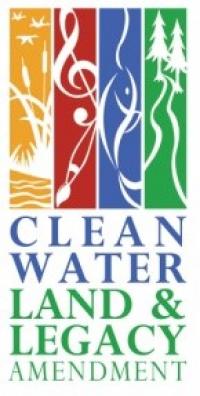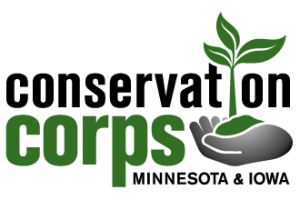Inside this Issue:
Important upcoming dates
Spotlight on Clean Water Fund grants
Legacy Partners
Conservation Corps CWF projects and placements
Tip of the Quarter
Native Vegetation Guidelines
Water Storage Grants
Returning funds
Important upcoming dates
Apr 17: FY23 CWF Grant Execution Deadline
Apr 26: BWSR Board Meeting
Apr 30: FY23 Watershed Based Implementation Funding applications due by 4:30pm
May 4: FY23 Water Quality and Storage Pilot Program applications due by 4:30pm
June 30: Some grants expire, end of state fiscal year
October 24-26: BWSR Academy at Cragun’s Resort
Spotlight on Clean Water Fund Grants
Before you begin work on your FY23 Competitive CWF grant, or continue work on a previous year’s CWF grant, read your grant agreement and the reminders in this Grants Quarterly. Reference the Grants Administration Manual for BWSR’s administrative and programmatic requirements and consult with your Board Conservationist if you have any questions.
FY23 Competitive CWF Grant Period
The grant period starts when the grant agreement is executed, meaning the workplan has been approved and all required signatures have been obtained. Work that occurs before this date is not eligible for reimbursement with grant funds and cannot be used as match. FY23 Competitive CWF grants must be completed by December 31, 2025.
Payment Distribution
CWF grant payments will be distributed in three installments to the grantee. The first payment of 50% of the grant amount will be paid after execution of the grant agreement. The second payment of 40% of the grant amount will be paid once the grantee has provided BWSR with notification and BWSR has reviewed and approved the reported expenditures of the initial payment. The final 10% will be paid after all final reporting requirements have been completed and BWSR has approved expenditures and reporting.
Match Verification
BWSR requires documentation for any match dollars. If you will be claiming federal funds as match, this may require working with the Farm Service Agency (FSA) office and obtaining a Freedom of Information Act (FOIA) waiver from the landowner. Please contact your Board Conservationist or Clean Water Specialists if you have questions.
Clean Water Fund Signage & the Legacy Logo
CWF grant agreements from BWSR state that the Grantee will “comply with requirements for project signage.” Legislative language requires that recipients of CWF grantees display the logo “where practicable." This includes printed materials, as well as signage on construction sites or public access points. Read more about the guidelines or download the appropriate logo(s) for print or web at https://www.legacy.mn.gov/legacy-logo.
Legacy Partners
The Request for Proposals (RFP) closed on February 15, 2023, and 23 applications were received, requesting $3.4 million. The BWSR Board is anticipated to approve funding recommendations at their April 26 meeting.
Conservation Corps CWF projects and placements
The Minnesota Board of Water and Soil Resources (BWSR) annual appropriation of $750,000 in Clean Water Funds (CWF) pays for Conservation Corps Minnesota and Iowa (CCMI) crews’ labor costs. Local government units (LGUs) submit applications for work projects and often provide matching funds. In the summer of 2023, the appropriation will also support more than 20 individual placement Clean Water Corpsmembers within LGUs supporting CWF projects.
In 2022, the CWF appropriation funded 29 crew projects across the state, comprising 18,520 hours of crew labor. Project work included shoreline buffer restoration, rain garden installation, streambank stabilization, wetland restoration and more.
“It’s been a huge help for water quality in the state because many of the partners we work with — SWCDs and watershed districts — tell us this is work they need to get done but just don’t have the staff or funds,” said Brian Miller, St. Paul-based AmeriCorps Program Director. “It leverages funds from multiple sources to meet the tipping point to have a project happen,” Miller said. “The limited resources will go further.”
Individual placement Clean Water Corpsmembers serve alongside a natural resource professional in an eligible LGU during the summer, learning hands-on skills in managing soil and water resources supporting CWF work. Corpsmembers assist with service and groundwater monitoring programs, wetland and watercourse inventories and assessments; prepare documents for cost-share and easement programs; conduct field surveys and site inspections and prepare reports; and coordinate and conduct educational programs and activities. Corpsmembers may also communicate with local landowners to develop management plans, gather input on best practices and provide educational materials on water resources.
To learn more about CCMI and available opportunities, visit www.conservationcorps.org
Tip of the Quarter
Q: Is it allowable to include known holiday hours in the actual cost of leave calculation before they have actually been taken?
A: Yes, holiday hours can be included because they are contractual and/or Board approved.
Native Vegetation Guidelines
BWSR’s Native Vegetation Establishment and Enhancement Guidelines were updated in 2022 to a new web-based format. Originally developed in 2010, these guidelines are intended to assist natural resource professionals and landowners across Minnesota in meeting state vegetation policies and standards, and to guide successful planting and management of restorations and other conservation projects. The guidelines cover topics such as seed and plant source requirements, planting dates, diversity levels and planting guidance by project type. The guidelines are designed to develop consistency among state programs, avoid using or introducing invasive species, and ensure that plantings function at a high level to meet project goals.
Updates to the guidelines were approved in fall of 2022 and were in large part clarifications. All projects completed with BWSR grant dollars that involve vegetation restoration or establishment must follow the guidelines, if required by program policy. While much of this publication is guidance, a few key components are required, such as the seed and plant source requirements. Some exceptions to the use of native plant materials are included as well. For example, perennial, hay or forage crops may be used in some agricultural settings. Additionally, some programs may have program-specific requirements that may supersede the guidelines. Check with your Board Conservationist for details.
Water Storage Grants
The Minnesota Legislature passed a law in 2021 requiring BWSR to develop a program to provide financial assistance to local government units (LGUs) to control water rates and/or volumes to protect infrastructure, improve water quality and related public benefits, and mitigate climate change impacts. Last year, over $800,000 was awarded to local partners for construction of projects such as wetland restorations and increased storage in low-lying areas. These projects will reduce peak rates in key tributaries and will remove sediment from runoff before it discharges into our lakes and rivers.
Another $1 million will be available through the next application window. Eligible activities must result in a reduction to peak flow rates and/or volumes to demonstrate a decrease in downstream flooding, water quality improvement or related public benefits, or to mitigate climate change impacts. Applicants must include a feasibility study with their application and pre- and post-project hydrographs showing the reduction in peak flow rate or volume. Funds can be used for project oversight, to finalize design, easements, and for construction activities. Additional details on application and project requirements are included in the RFP.
Returning funds
If you need to return grant funds at closeout, there are a couple of additional steps required. After completing all reporting--including final expenditures--within the work plan activities area of eLINK, create a progress report. At that point answer yes to the question Is this a final report? When this question is answered it will ask “Are you returning funds? Answer yes and once that is completed enter the “Confirm Amount to be returned”, Enter Check # Number (if you have the number), complete the Narrative section and check the attestation box. Click on the Generate Returned Funds Form Report button to generate the Returned Funds Form. The form can then be printed and sent with the check to the address on the form.
Make out the check with returned funds to BWSR and return the check along with the returned funds form to BWSR at the address indicated on the form. Returning the form with the check helps us attribute the funds to the right grant.


